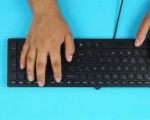Dell Optiplex USB Boot Guide: How to Boot from USB on Dell Optiplex Systems
- 1. Overview: Dell Optiplex USB Boot Process
- 2. Preparing Your USB Drive for Booting
- 3. Accessing BIOS Settings on Dell Optiplex
- 4. Configuring Boot Order for USB Drive
- 5. Troubleshooting Common USB Boot Issues
- 6. Where to Buy Dell Optiplex Systems and Accessories
1. Overview: Dell Optiplex USB Boot Process
The Dell Optiplex series is a popular line of desktop systems, known for their reliability and performance. If you’re looking to boot from a USB drive on a Dell Optiplex system, this guide will walk you through the necessary steps. Booting from USB is particularly useful when you need to install an operating system, run diagnostic tools, or use a live Linux distribution. In this article, we’ll cover how to boot from a USB drive on Dell Optiplex models, including the steps for accessing BIOS and setting up the boot order.
2. Preparing Your USB Drive for Booting
Before you can boot from a USB drive on a Dell Optiplex, you must ensure the USB drive is properly prepared. Follow these steps to prepare your USB drive:
- Choose a Compatible USB Drive: Select a USB drive with at least 8GB of storage, depending on the size of the operating system or software you wish to install.
- Create a Bootable USB Drive: Use tools like Rufus, Windows Media Creation Tool, or Etcher to create a bootable USB drive. Make sure the USB drive is formatted with the correct file system (e.g., FAT32 or NTFS).
- Download the Necessary Files: If you are installing an operating system like Windows or Linux, download the necessary ISO files and load them onto the USB drive using the bootable tool.
3. Accessing BIOS Settings on Dell Optiplex
To boot from a USB drive on your Dell Optiplex system, you need to access the BIOS settings. Here's how you can do that:
- Power Off the System: First, make sure your Dell Optiplex is turned off completely.
- Power On and Enter BIOS: Turn on the system and immediately press the F2 key repeatedly until you enter the BIOS setup.
- Navigate Through BIOS: Once inside the BIOS, you can make necessary changes to boot settings. Use the arrow keys to navigate the BIOS menus.
4. Configuring Boot Order for USB Drive
Once you’re inside the BIOS, you need to configure the boot order to prioritize the USB drive. Follow these steps:
- Locate Boot Options: In the BIOS menu, navigate to the “Boot” or “Boot Order” section, depending on your specific Optiplex model.
- Set USB as Primary Boot Device: Move the USB drive to the top of the boot list. This ensures the system will attempt to boot from the USB drive first.
- Save and Exit: After configuring the boot order, save your changes and exit the BIOS by pressing F10 (or following the on-screen instructions for saving and exiting).
5. Troubleshooting Common USB Boot Issues
Sometimes, even after following the correct steps, you may encounter issues when booting from USB. Here are some troubleshooting tips:
- Check the USB Drive Format: Make sure your USB drive is formatted correctly and contains a bootable file system (e.g., FAT32).
- Ensure the Bootable Files Are Properly Installed: Verify that the bootable files (ISO files, operating system) are correctly installed on the USB drive using a tool like Rufus.
- Use a Different USB Port: If the system doesn't recognize the USB drive, try using a different USB port, preferably a USB 2.0 port.
- Update BIOS: Ensure your BIOS is up to date, as older versions may not support booting from certain USB drives.
6. Where to Buy Dell Optiplex Systems and Accessories
If you're looking for a reliable Dell Optiplex system or need accessories to enhance your computer setup, visit Ninja Stik. They offer a wide range of Dell systems and compatible accessories, including those for USB booting. Browse their website to find the right products and get started with your next project today!





























